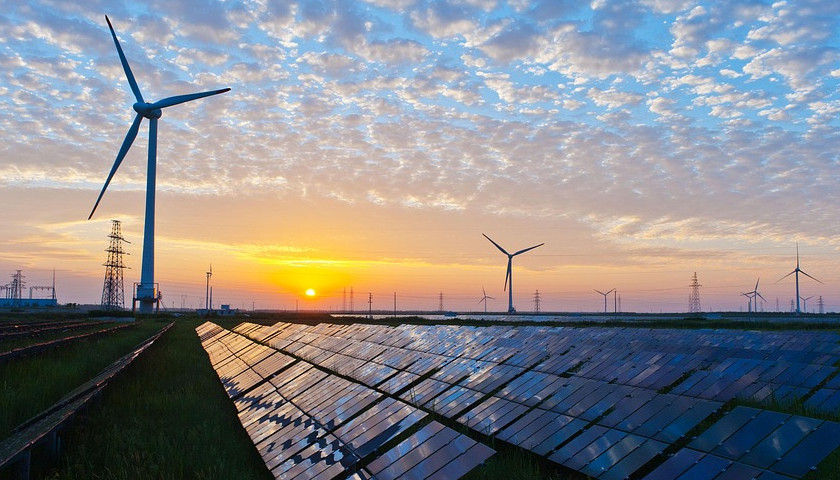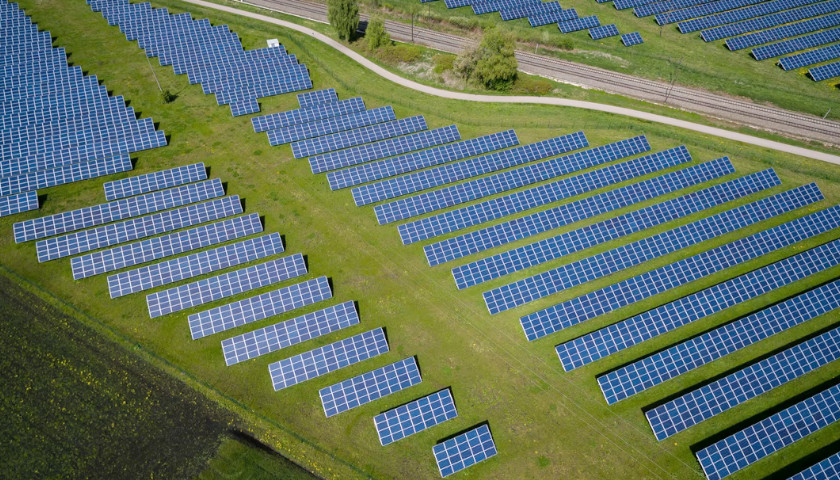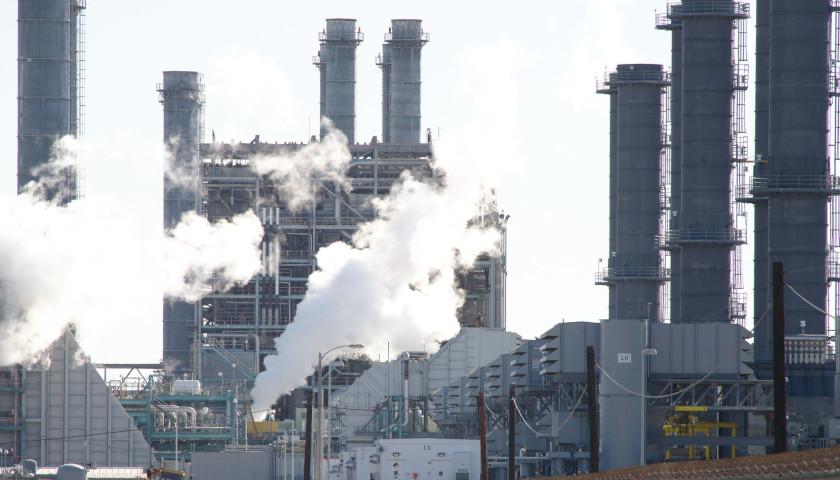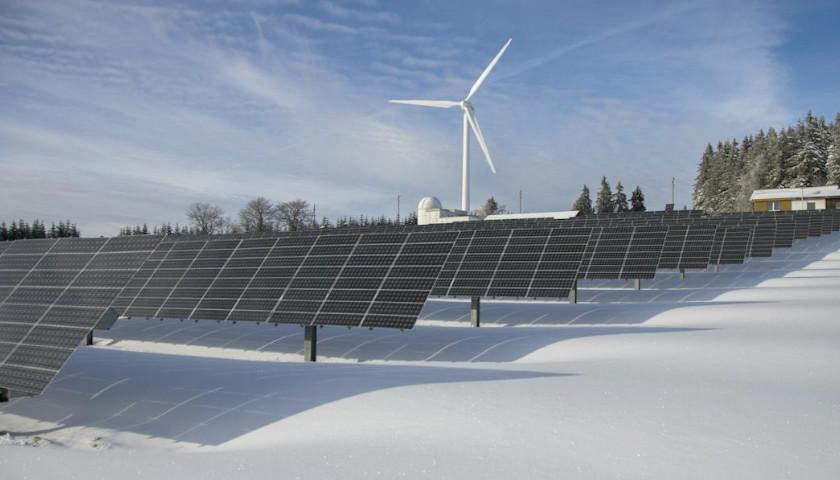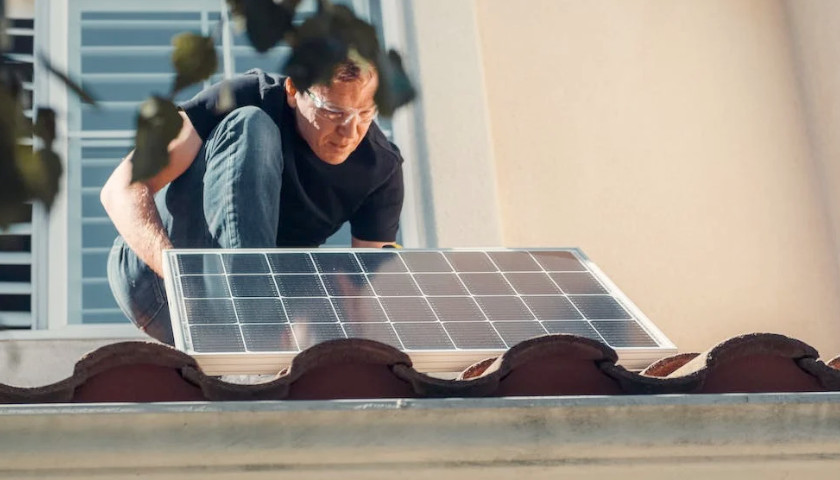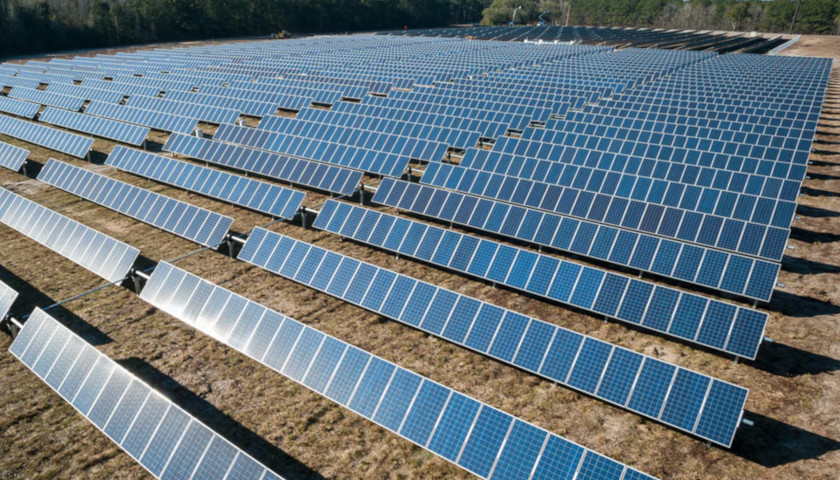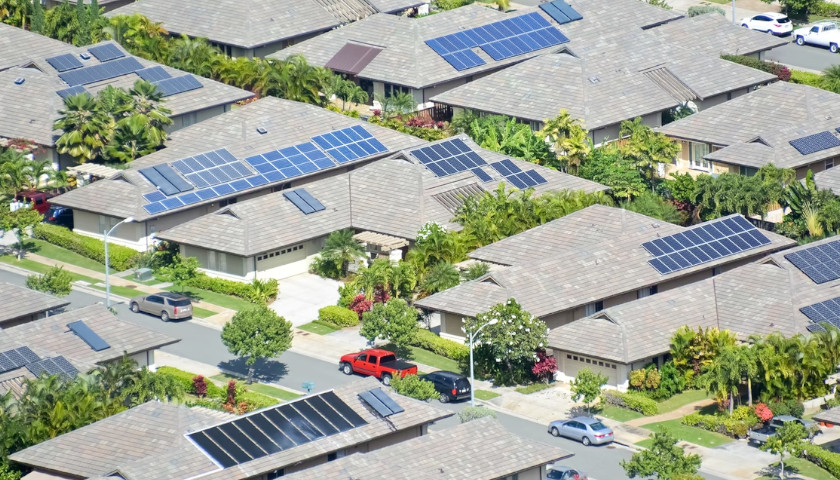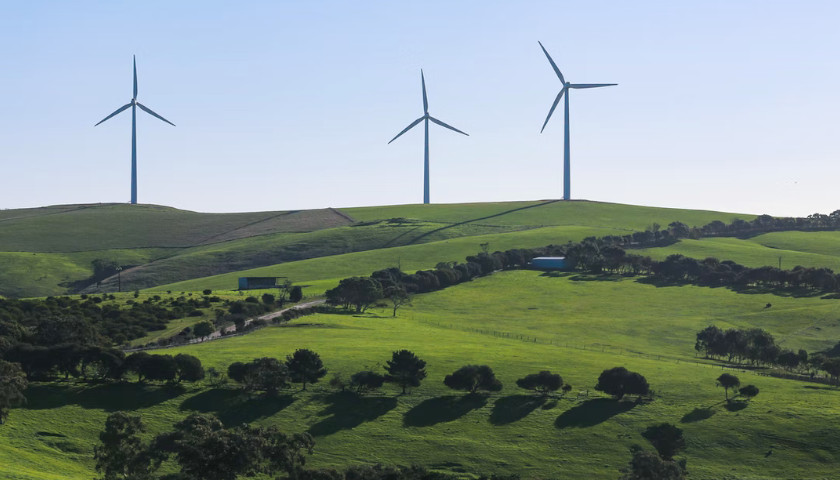Local opposition has become a formidable force in resisting the growth of wind and solar power. Opponents have concerns including the impact on whales by offshore wind development, the gobbling up of limited agricultural land by solar companies, the degradation of grid reliability and the high costs of renewable energy. As the projects spread across rural America and along the nation’s coasts, residents of communities are forming grassroots opposition to the projects.
Read MoreTag: solar
Biden Admin Looks to Open Up 31 Million Acres for Solar After Locking Up Oil, Gas in Huge Swath of Alaska
The Biden administration proposed to open up tens of millions of acres of public lands to solar development on Thursday after cementing restrictions on oil and gas activity across large swaths of Alaska.
The Bureau of Land Management (BLM) rolled out its proposed “Western Solar Plan,” which would put approximately 31 million acres across 11 western states on the table for possible solar development. The agency’s solar plan comes on the heels of its Tuesday announcement that it had finalized protections for 28 million acres of public land in Alaska that will effectively prohibit oil and gas activity on that acreage.
Read MoreStudy Grades Natural Gas as Best Source for Reliability, Affordability and Environmental Impact
A new study finds that natural gas is the most effective energy source meeting growing energy demands affordably and reliably, while balancing environmental and human impact.
The “Grading the Grid” study by the Mackinac Center for Public Policy, a pro-free market nonprofit, and Northwood University rates natural gas, coal, petroleum, nuclear, hydroelectric, wind, solar and geothermal generation sources on their reliability, environmental and human impact, cost, innovation and market feasibility.
Read MoreCommentary: The Delusions of Davos and Dubai Surrounding Wind and Solar Energy
In the most recent “Conference of the Parties,” otherwise known as the United Nations extravaganza that convenes every few years for world leaders to discuss the climate crisis, several goals were publicly proclaimed. Notable were the goals to triple production of renewable energy by 2030 and triple production of nuclear energy by 2050. Against the backdrop of current global energy production by fuel type, and as quantified in Part One, against a goal of increasing total energy production from 600 exajoules in 2022 to at least 1,000 exajoules by 2050, where does COP 28’s goals put the world’s energy economy? How much will production of renewable energy have to increase?
To answer this question, it is necessary to recognize and account for the fact that most renewable energy takes the form of electricity, generated through wind, solar, or geothermal sources. And when measuring how much the base of renewables installed so far will contribute to the target of 1,000 exajoules of energy production per year in order to realize—best-case scenario—800 exajoules of energy services, the data reported in the Statistical Review of Global Energy is profoundly misleading.
Read MoreCommentary: Solar’s Lofty Ambitions Are Consuming Ever-Larger Expanses of Land Down Below
Wedged in the southern flank of Virginia, Charlotte County is home to some 11,500 people who live amidst rolling hills and family farms, pastures and sawmills, a historic Civil War battlefield, and four townlets tinier than many suburban subdivisions.
But this pastoral tableau will be swept up in the green revolution when construction begins here on the nation’s largest solar power facility east of the Mississippi River. The planned 800-megawatt Randolph Solar Project in Charlotte County will replace a commercial lumber farm of loblolly pines with 1.6 million photovoltaic panels covering an area equivalent to seven square miles.
Read MoreSolar Company Joins Multibillion Green Investment Spree in Republican States
First Solar announced plans to invest $1.2 billion into production of U.S.-made photovoltaic (PV) solar modules in Ohio and the southeastern U.S., joining a growing list of companies developing green energy initiatives in Republican-controlled states.
First Solar announced that it would invest $185 million into “upgrading and expanding” its manufacturing capabilities in three factories in northwestern Ohio, which the company describes as the “largest vertically-integrated complex of its kind in the Western Hemisphere,” as well as investing $1 billion in a new plant in the American Southeast, according to a press release. The solar company is the latest in a slew of billion-plus-dollar investments in green energy initiatives, spearheaded by automakers, seeking to take advantage of tax credits offered under the Inflation Reduction Act by constructing or retrofitting production facilities in Republican-controlled states.
Read MoreCommentary: Solar Panel Programs Increase Your Electricity Bill
Why are electricity prices rising so fast?
Over the past quarter century, electricity prices across America have increased by an average of 1.8 percent per year, from $8.38 per kWh in 1994 to $13.01 in 2019. Then in January this year both Entergy and Mississippi Power increased their rates by $7.81 per month and $5.27 per month respectively, affecting over half a million Mississippi residents.
Read MoreCommentary: Energy Myths Are Triggering a New Dark Age in Europe
Europe has an energy crisis. Factories are halting operations in the face of soaring energy prices; families are paying 50% more for heating (or opting to freeze in their homes), and Europe as a whole continues to destabilize its political position by making itself dependent on Russia for natural gas.
Europe shows what happens when you adopt policies based on false ideas—myths about energy that all but guarantee high prices, power blackouts, and a crashing economy.
Read More
